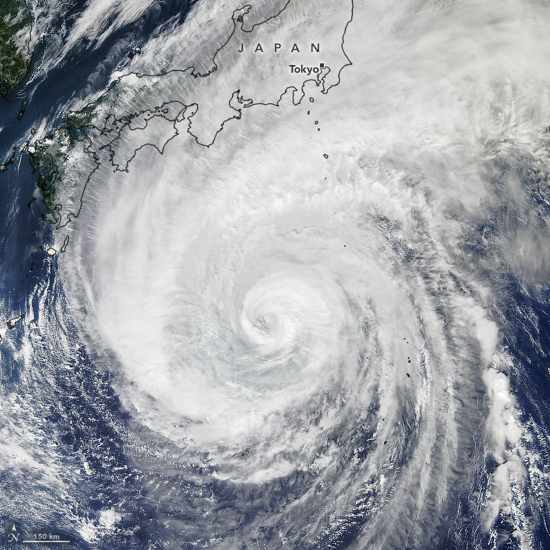 09-01-2020
09-01-2020
Munich Re estimates typhoon Hagibis loss at $10bn, Faxai at $7bn

 Insurance Alertss
Insurance AlertssMunich Re estimates typhoon Hagibis loss at $10bn, Faxai at $7bn
Global reinsurance giant Munich Re’s NatCat service has released estimates for the industry insured losses from Japanese typhoons Hagibis and Faxai, pegging them at $10 billion and $7 billion respectively.
Munich Re’s estimate is the latest indicator that the ultimate industry loss from typhoon Hagibis may be much lower than had initially been feared. Early estimates from risk modellers had estimated a range up to $16 billion, while an estimate of $15 billion was released by reinsurance firm RenaissanceRe’s CEO delivered soon after the event.
Those figures had sent people scrambling to harden reserves for typhoon Hagibis, but in recent weeks the market’s expectation of the ultimate insurance and reinsurance industry loss from the storm has declined somewhat. The market is becoming increasingly confident that industry losses from recent Japanese typhoon Hagibis will ultimately stabilise below the top-end of estimates. It’s also noteworthy that some ILS funds adjusted their Hagibis loss expectation downwards recently.
Swiss Re recently estimated typhoon Hagibis as only an $8 billion industry loss, also estimating typhoon Faxai at $7 billion. Now, Munich Re has joined its competing reinsurance firm on Faxai, putting the loss also at $7 billion, but more interesting is its opting for $10 billion on Hagibis, a potential trigger point for any Japanese wind industry loss warranties (ILW’s) in the market.
A number of ILW contracts use Munich Re’s NatCat service as an unofficial source of data for their triggers, but it’s not clear to use whether any $10 billion trigger Japan wind ILW’s are currently on-risk in the market. It is possible though, as it has been a relatively popular trigger point in the past. Munich Re notes the differences between Hagibis and Faxai, saying that typhoon Faxai crossed Tokyo Bay with wind speeds of 170 km/h and made landfall in the city of Chiba, while typhoon Hagibis hit more to the northwest, directly over the Yokohama-Tokyo conurbation.
Typhoon Hagibis was characterised by extreme rainfall though, with 40% of annual rainfall hitting a number of areas in just a few days, while Faxai was more of a wind-only loss event. The two typhoons were the most costly natural disasters of 2019, Munich Re believes, estimating overall losses from Hagibis at $17bn, with insured losses of around $10bn. Faxai is estimated to have resulted in overall losses of about $9bn, but insured losses of about $7bn due to having a greater share of more heavily insured storm losses.
Ernst Rauch, Chief Climate and Geoscientist at Munich Re, commented, “The typhoon season shows that we must consider short-term natural climate variations as well as long-term trends due to climate change. “In particular, cyclones are becoming more frequently associated with extreme precipitation, as with Hagibis in Japan in 2019 and Hurricane Harvey in 2017 in the US. Recognising these changes can form the basis for further preventive measures to reduce losses.”
Munich Re said that the 2019 Japan typhoon season was affected by the “El Niño Modoki” effect, as it was in 2018, a climate variation that can cause typhoons to steer more frequently towards Japan. Overall, Munich Re estimates natural catastrophe economic losses at $150 billion for the year 2019, driving insured losses of $52 billion. That compares to Swiss Re’s early estimates of $140 billion of economic losses from natural disasters and man-made losses, causing $56 billion of insurance and reinsurance market losses.
Torsten Jeworrek, Member of the Board of Management at Munich Re, commented, “The severe cyclones in 2019 have highlighted the importance of knowledge about changes in risk. Natural climate variations influence weather catastrophes from year to year. Longer-term climate change effects can already be felt and seen. Buildings and infrastructure must be made more resistant in order to reverse the increasing trend in losses. This will enable insurance to be more effective and support the remaining financial losses.”
Munich Re’s estimate is for just 35% of global natural disaster losses to have been covered by insurance in 2019, a lower figure than the previous year and further evidence of the in some cases widening protection gap.
Source: Artemis

http://www.insurancealertss.